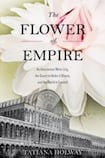
Royalty is a mythical status that requires assiduous maintenance. A crown adds precious inches to a new queen, but additional symbols of unique superiority are needed to create the illusory grandeur of queendom. Young Queen Victoria was assisted in that endeavour by an extraordinary flower.
Tatiana Holway is an American expert on Victoriana, according to her publisher, and "pursues a passion for gardening". In The Flower of Empire she synthesises her knowledge of history and botany. She exhibits a superabundance of research in occasional deviations from her main narrative, yet she presents her scholarship with such enthusiasm that most readers are likely to enjoy it as informative entertainment.
Holway begins the long story with Sir Walter Raleigh's 1595 report The Discoverie of the Large, Rich and and Bewtiful Empyre of Guiana. He had hoped to find treasure there comparable with the Spaniards' loot from Mexico and Peru. "We saw hils with stones the coullor of Gold and silver," he wrote, but all that glittered turned out to be pyrites. "I do not yet know," he admitted, whether there might be any minerals of real value, "but I hope the best."
After England’s successful conclusion of the Napoleonic Wars, the region that Raleigh explored was recognised as the colony of British Guiana. Though it was Britain’s only territory in South America, situated between Venezuela to the west, Dutch Guiana or Suriname to the east and Brazil to the south, London was surprisingly vague about its exact limits. In 1835 the Royal Geographical Society commissioned a German volunteer, Robert Hermann Schomburgk, to make accurate maps of the place. The society allowed three years for the survey and an inadequate budget of £900. It cost more to supply his expeditions with local guides, bearers, equipment, clothing, canoes, food and drink. Schomburgk had to contribute extra money, cadged from the governor and earned by selling orchids and other valuable plants to collectors in England.
He started his mission in Georgetown, the capital, which I have visited several times in the distant past as an air navigator and more recently as a journalist without noticing any great improvements. It is on the Atlantic coast, at sea level or perhaps even a bit below, and is susceptible to flooding, with imperfect drains. It is not fragrant on hot, humid evenings. Though visitors to the country now known as Guyana admire some magnificent scenery, there is a confusion of rivers subsiding from the mighty Amazon.
Torrential rains can make progress by boat into the hinterland difficult. There are alligators, poisonous snakes and insects that burrow under the skin. Schomburgk’s early experiences on safari were disheartening. Like Raleigh, he didn’t find El Dorado, and he was handicapped by a team he characterised as “negligent, insubordinate natives”.
Then he had a lucky break when on an upper reach of the Berbice river on January 1st, 1837, his canoe was impeded by the biggest, most gorgeous water lily in the world. Its leaves measured as much as 2.4m (8ft) across, and its gigantic, brilliant white blossom pinkened and reddened as the hours went by.
It was the year of Queen Victoria's coronation. When word of the lily got back to horticulturally obsessed England, it was named Victoria regia in her honour. Schomburgk, after much experimentation, succeeded in shipping live plants and fertile seeds to England, and soon rose from obscurity to international fame.
The history of the dukes of Devonshire and their estates, including the castle in Lismore, Co Waterford, must be fairly well known on this side of the Atlantic. But Holway, apparently fascinated by the wealth, elegance and influence of the English aristocracy in the 19th century, gives readers a meticulous description of the sixth duke’s dining room at Chatsworth, in Derbyshire. “Six-foot-wide mahogany doors, set into alabaster frames and flanked by classical columns, form entrances on both sides of the sixty-foot chamber,” she writes. “Hundreds of gilded floral medallions emblazon the vaulted ceiling. . .” And so on and on.
Holway does revert to relevance, however. The duke, a compulsive collector of rare exotic flowers, did more than any other Englishman to cultivate, nurture and display the wonderful lily. He rendered Chatsworth a paradigm for Sir William Hooker to emulate as he developed the botanic gardens at Kew.
The duke had an immense glass hothouse built in which to simulate the lily's natural environment. After the queen's death, the lily was renamed Victoria amazonica, in recognition of its origin. It grows in more than 100 public gardens worldwide, and Guyana has adopted it as its national flower.
Patrick Skene Catling is an author and journalist.











